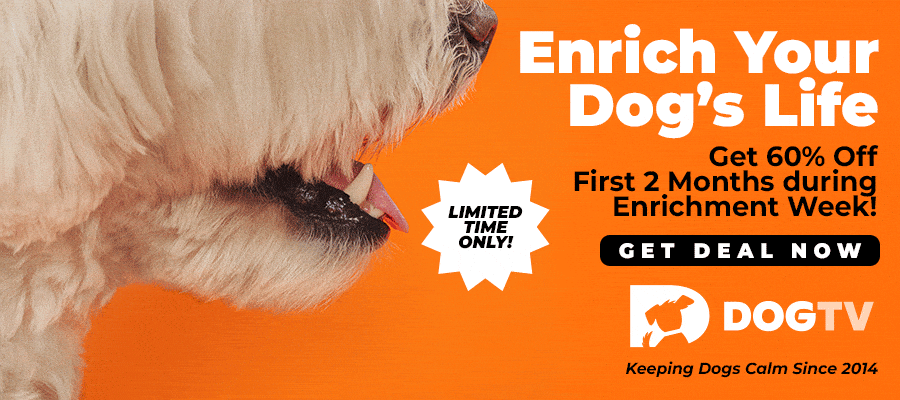By John Woods
If you suddenly found yourself in the home office because of the Coronavirus, you might not enjoy it, however, your dog might find it the most amazing thing in the world! Due to outbound restrictions, your dog may be used to you spending more time with him, showering him with attention. As soon as life returns to normal, when the pandemic comes to an end and owners return to work, separation anxiety might get triggered with the dogs.
A year made huge transformations in our lives, and dogs benefited the most from it. They were pampered and they enjoyed every second with us. We are here to prepare you and your dog for the separation to come.
Practice leaving the dog alone
Leave the house without your dog for longer and longer periods of time. Get him used to the old, soon to be new fact that humans leave the house and he stays home alone. Start doing this weeks in advance before you go back to work. Start small. Avoid the drastic changes if they are not necessary. If leaving is not an option, close the door to your home-office giving the dog time to adjust to spending time without you.
It’s not advised to pay extra attention to your dog before you leave through the door or when you come back, as it makes it harder for dogs. Saying quick goodbye before leaving is recommended. When returning home, you should wait for the dog to calm down before interacting with him, because immediate attention to him will make him wait for you all day long. Lots of belly rubs, treats, pets, and reassurance are all helpful once the dog settles down after your arrival.
Make it a positive experience when you leave the house. Leave some appetizing bites that take a few minutes to eat or an interesting toy that will bind him down for a while.
Modify the routines
Return to the old routine you had before the lockdowns. Dogs are creatures of routine. Go back to daily schedules of walks, feedings, play time, cuddles and enforce bedtime. Since the old routine probably changed when you started working from home, it’s time to introduce those habits again. Follow some of the steps from when your dog was a puppy, but keep in mind this time around it might be a bit more challenging.
Your dog might need retraining when it comes to any of the above mentioned activities. But it’s not only the dog that needs to get used to the new schedules, the owner needs to change his movements as well.
Exercise
One of the simplest ways to make sure your dog will get through the day while you’re at work, is if you tire him out before you leave. Exercising both physically and mentally is a way to drain excess energy, thus avoiding your pet misbehaving while you are away! If you’ve been exercising with your four legged friend during the quarantine, just increase the amount and duration of the same. The method you use is not important – either you take him on a long walk or you make him chase after a ball, as long as it physically tires him out. Going outside will be beneficial to both dog and human, so don’t hold back. Engage the dog in puzzle toys so his brain gets stimulated. Exercise also helps with anxiety, which we are trying to avoid.
Groomer Appointment
Just because the pandemic is not yet over, doesn’t mean we have to neglect our pets. Let’s face it, we have all let ourselves go just a tiny bit. Our pets don’t deserve that! We might take care of brushing his teeth, clipping his nails, brushing his fur, but a professional does it so much better. Especially if you have a furry barker whose coat needs more attention – Maltese, Poodles, Pomeranians all need their grooming sessions and unique hairstyles. Warmer months are ahead of us and it’s essential that dogs are clean and comfortable.
Same goes for a veterinarian visit. Spending too much time with our pets can cause that we don’t notice the subtle changes we would catch right away in other circumstances.
Warning Signs
Separation anxiety is the most annoying behavioral problem of our time. Overbinding can cause serious problems later on and can severely injure our dog as well. Too close of a social attachment manifests itself as an internal insecurity in our dog. Results of separation anxiety may seem loving at first – the dog would follow the owner like a shadow never leaving his side. Soon it could turn into disregarding some rules already set up, all the while demanding attention. The owner inadvertently may even reinforce this behavior with attention to the dog, especially if the owner reacts positively.
Warning signs of separation anxiety:
- barking, whining when the owner is not at home
- panting, walking
- strong salivation
- destructive behavior such as carpet chewing, door scraping, furniture destruction
- making in the house
- vomiting, diarrhea
- In serious cases, dogs can even injure themselves.
Separation anxiety not only bears dogs in a psychological sense, but because many four-legged pets try to dig themselves out of the apartment, they can also be injured: they can wait for us at home with broken teeth, damaged nails, bleeding paws.
Assistance if the adaptation fails
Once you determine that your pet is having difficulty adjusting and has anxiety issues, the best solution would be to consult your veterinarian. The vet might suggest pheromone diffusers, medications, aromatherapy, thunder shirts, supplements and other helpful options.
Think about enrolling your dog into daycare for more human interactions or try coming home during lunch time.
A post pandemic world will hit everyone differently, but the most stressful will be for our four-legged friends. Pets have provided us with companionship and reliability during these previous bleak months. We need to do right by them and make sure their adaptation to us returning to our jobs goes as smoothly as possible.


